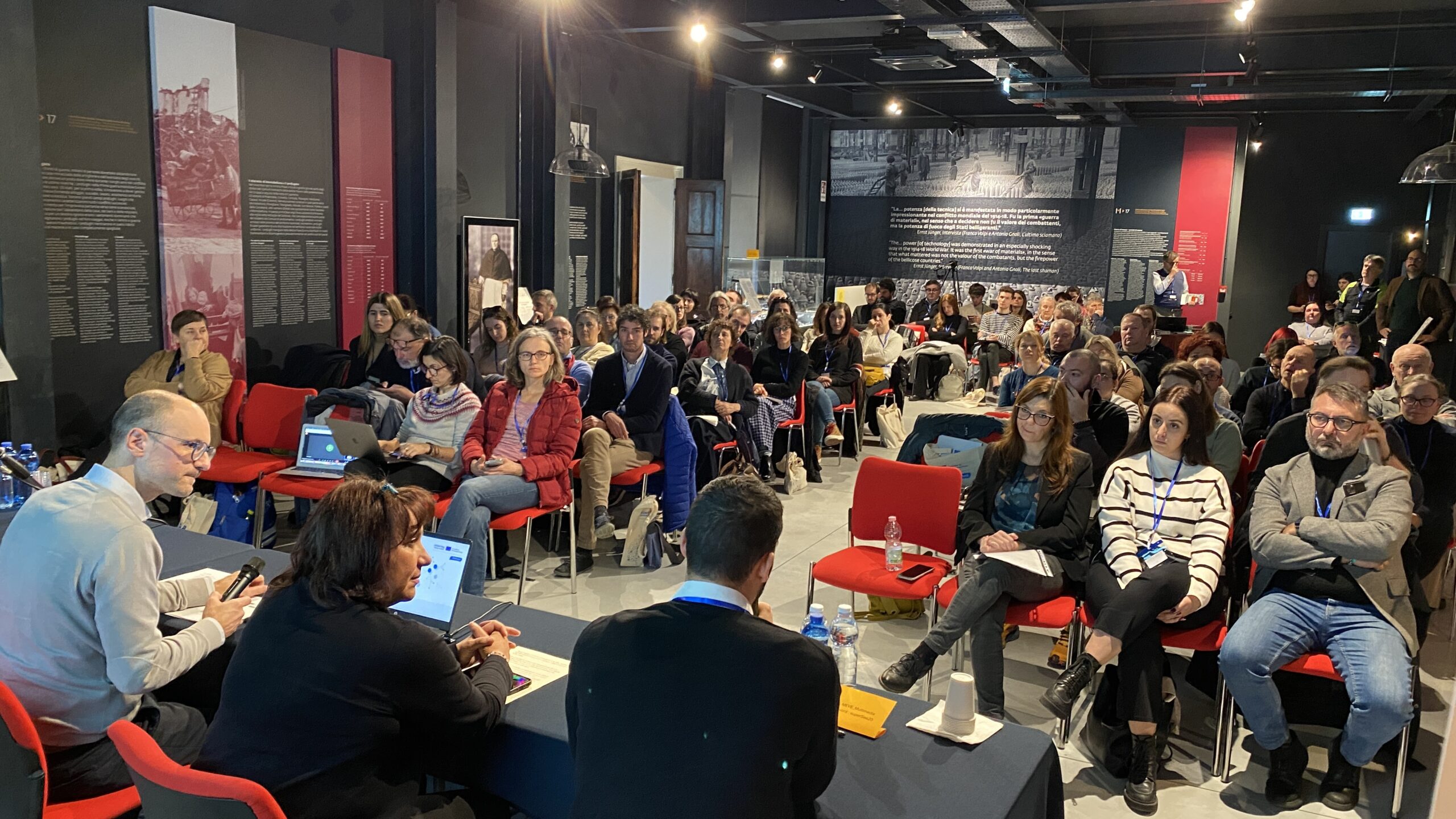On the 2nd and 3rd of December, representatives of numerous organisations and institutions from Slovenia, Friuli Venezia Giulia, Veneto, Trentino, and Lombardy, engaged in the research, preservation, promotion, sustainable development, and management of World War I heritage, gathered for a two-day study visit in Montebelluna (Veneto).
In addition to the project partners and their associated partners, the event was attended by representatives of heritage and research organisations, tourism boards, municipalities, development agencies, associations, museums, and other institutions.
The purpose of the meeting was to foster mutual acquaintance among key institutions working on the shared heritage within the cross-border functional area, addressing many of the challenges posed by this significant historical legacy. The event also aimed at exchanging knowledge and experiences across various fields and exploring the heritage found in this part of the Treviso Province. Participants within different thematic groups discussed the major issues related to heritage in their regions such as:
- promotion and tourism
- management, preservation, protection and research
- new projects and cooperation
- developing products for valorization of heritage;
- nominating the cultural heritage;
- heritage governance.
As always the best discussion is followed by real experience so participant were able to see in person the heritage in the region: the host museum, British Cemetery in Giavera del Montello, the Italian ossuary Sacrario Ossario Militare del Montello, the Jonathan Collection Foundation featuring a World War I-era hangar and aircraft replicas, and the French ossuary Sacrario Francese di Pederobba.
Such gatherings, which strengthen relationships, facilitate the exchange of knowledge, address common challenges, and inspire new ideas, make a valuable contribution to improving national, cross-border, and transnational cooperation. This also positively impacts the sustainable development of regions marked by the legacy of World War I. The synergy and capitalisation of two EU projects and programmes provide significant support in achieving these objectives.
